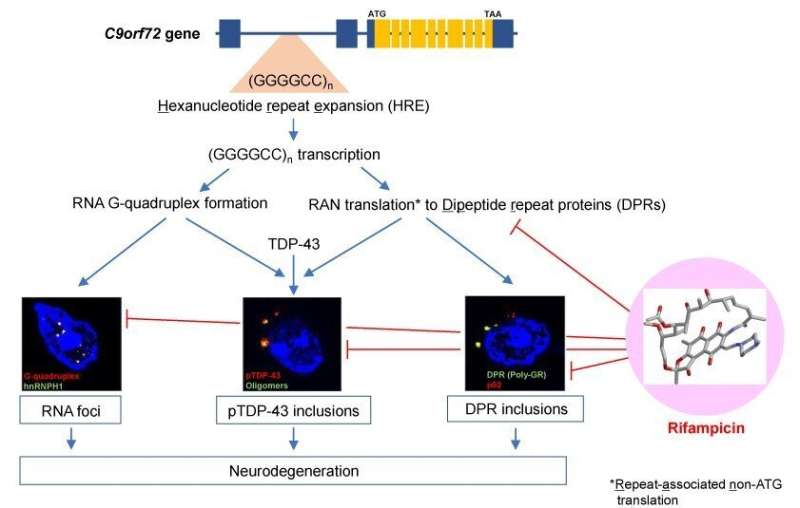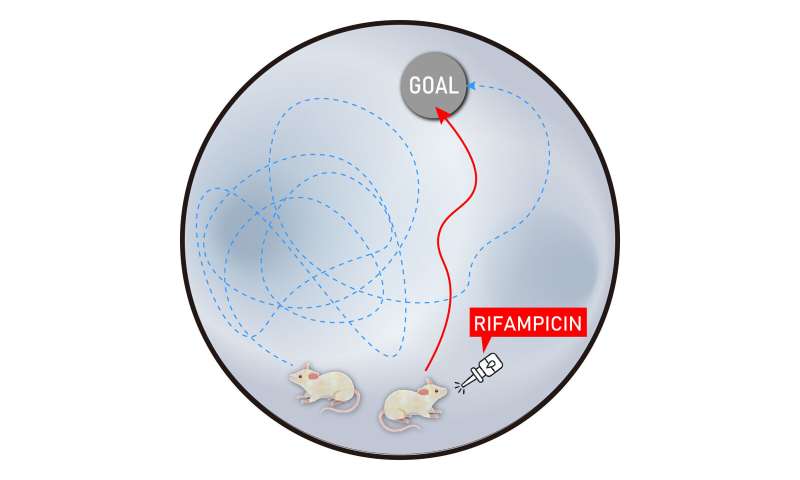
What did Stephen Hawking and Mao Zedong have in common? They both suffered from amyotrophic lateral sclerosis (ALS), for which a cure remains elusive. Scientists from Osaka Metropolitan University took an important step toward the prevention of ALS and another brain disorder called Frontotemporal dementia (FTD) with their research on the effects of the antibiotic rifampicin on genetically modified mice. Their paper is published in Biomedicines.
“The primary cause of FTD and ALS is a hexanucleotide repeat expansion (HRE) in non-coding regions of the C9orf72 gene,” said lead researcher Professor Takami Tomiyama. This mutation causes neurodegeneration through loss-of-function or gain-of-toxic-function mutations. “The loss-of-function mutation is indicated by the formation of a nucleic acid structure called G-quadruplex that blocks the transcription of C9orf72. The gain-of-toxic-function mutation is indicated by the formation of RNA foci, the aggregates of toxic RNAs, and of dipeptide repeat proteins (DPRs),” Professor Tomiyama explained. Together, G-quadruplex and DPRs further accelerate the aggregation of RNA-binding proteins such as TDP-43, leading to neurodegeneration.
Rifampicin is an antibiotic that slows bacterial RNA production; it is usually administered in conjunction with other antibiotics. By examining the influence of rifampicin on the formation of RNA foci, DPRs, and TDP-43 inclusions, the research team determined its potential for preventing FTD and ALS. They nasally administered rifampicin to mice with the human C9orf72 gene containing a 500 hexanucleotide repeat expansion. The team then evaluated the mice’s cognitive function through observing their ability to escape a maze, before examining their brain tissue.

The findings show that intranasal rifampicin treatment significantly improved the mice’s cognitive function and memory. It substantially inhibited the formation of cytoplasmic inclusions composed of protein aggregates in brain tissue. Rifampicin also weakened the formation of RNA foci containing G-quadruplex, although it is unclear how. Furthermore, synapse loss, neuronal loss, and microglial activation were also attenuated by rifampicin treatment.
Source: Read Full Article





